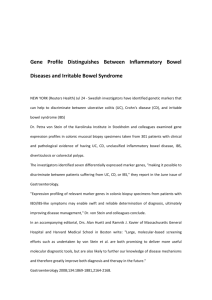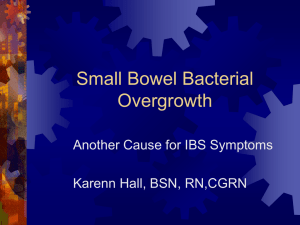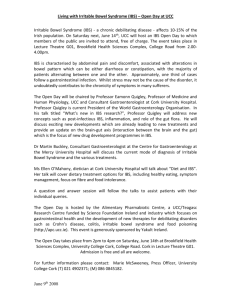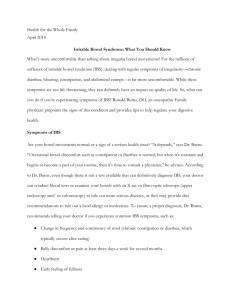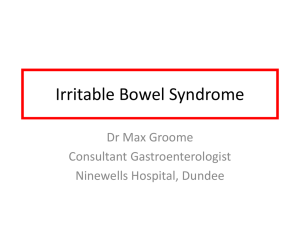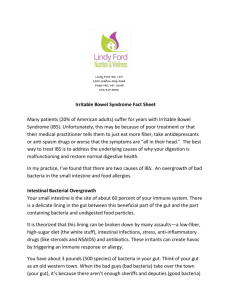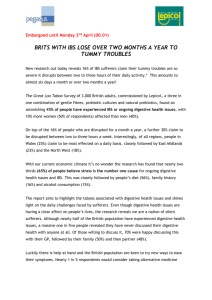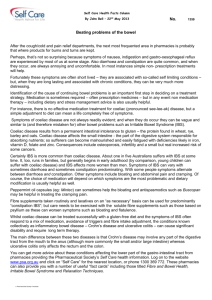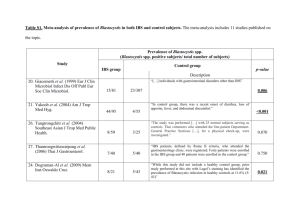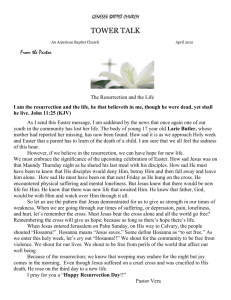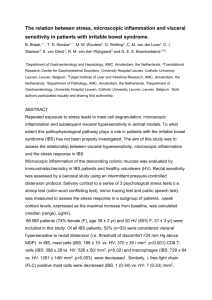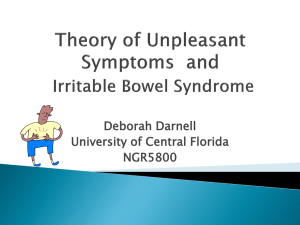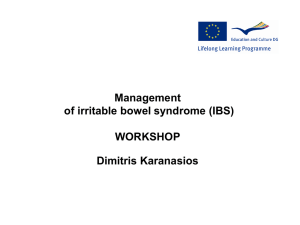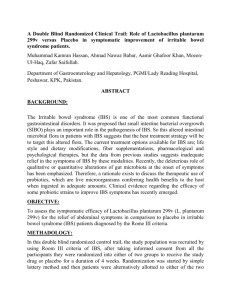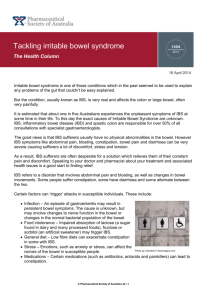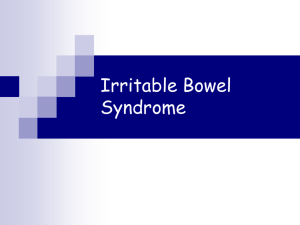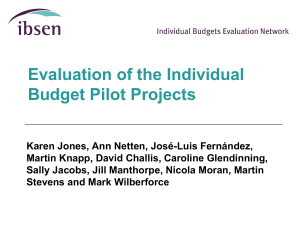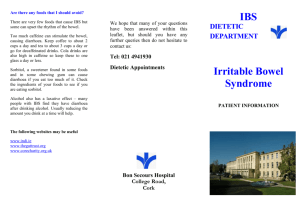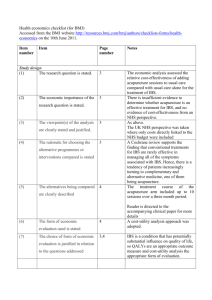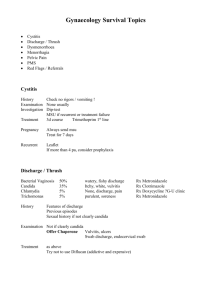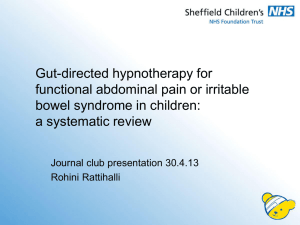3. Irritable Bowel Syndrome
advertisement
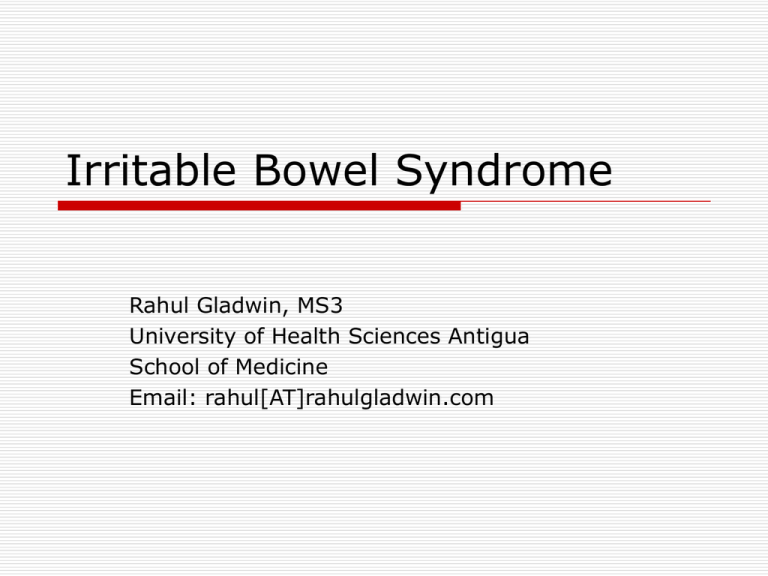
Irritable Bowel Syndrome Rahul Gladwin, MS3 University of Health Sciences Antigua School of Medicine Email: rahul[AT]rahulgladwin.com Definition & Stats Characterized by irregular bowel habits and abdominal pain without any structural abnormalities. Throughout the world, 10-20% of people might have IBS More common in women Compare with inflammatory bowel disease. Associations Symptoms usually overlap with other disorders such as fibromyalgia, backache, headache, and genitourinary symptoms. Other affecting factors include altered gastrointestinal GI motility, visceral sensitivity, abnormal central processing, disturbance of brain-gut interaction, genetic and environmental factors, autonomic and hormonal events, and psychosocial disturbances. Clinical Usually affects individuals younger than 45. Decreased incidence in older individuals Women are 2-3 times more likely to have IBS. [80% patients are women] Findings The main finding is abdominal pain during morning hours – which may be in the hypogastrium (25%), right (20%), left (20%), and epigastrium (10%). Other findings may include defecation straining, urgency or a feeling of incomplete bowel movement, bloating, and passing mucus. DIAGNOSTIC CRITERIA (from Harrisons) Pathophysiology Poorly understood. May be due to abnormal gut motor and sensory activity, central neural dysfunction, stress, and psychological disturbances. Studies of motor and colonic myoelectrical activity under unstimulated conditions are normal. Pathophysiology There is increased rectosigmoid activity 3 h after eating. Stimulation with rectal balloon (FlexiSeal®) of diarrhea-prone patients showed distention-evoked contractile activity. IBS patients show exaggerated sensory responses to visceral stimulation suggesting visceral afferent dysfunction.. Pathophysiology Lipids exaggerate sensation of gas, discomfort, and pain in IBS patients. There is a correlation between stress and emotional disorders and IBS. IBS patients have increased activity in the mid-cingulate cortex – associated with visceral pain, response selection and attention process. Study done in January 2011 shows that small intestine bacterial overgrowth (SIBO) may play a role in IBS. Pathophysiology Gastroenteritis may predispose IBS in 25% of patients - Campylobacter, Salmonella, and Shigella most likely involved. IBS patients more likely to have increased serotonin (5HT)-containing enterochromaffin cells in the colon. Serotonin plays an important role in visceral perception and regulation of GI motility Differentials Lactase deficiency. Celiac sprue. Side-effects from anticholinergic, antihypertensive, and antidepressant medications. Biliary tract disease, intestinal ischemia, peptic ulcer disorders, and carcinoma of the stomach and pancreas. Diverticular disease of the colon, inflammatory bowel disease Giardia Laxative abuse Hyperthyroidism Treatments Treatments High-fiber diets. Anticholinergic drugs inhibit gastrocolic reflex (ipratropium bromide). Anti-diarrheals (loperamide). Anti-depressants – TCAs and SSRIs (fluoxetine). Activated charcoal as part of anti-flatulence therapy. Serotonin Receptor Agonist and Antagonists – alosetron, tegaserod. Chloride Channel Activators – lubiprostone. Sources Harrisons Internal Medicine 17th edition. www.medpagetoday.com www.ncbi.nlm.nih.gov
